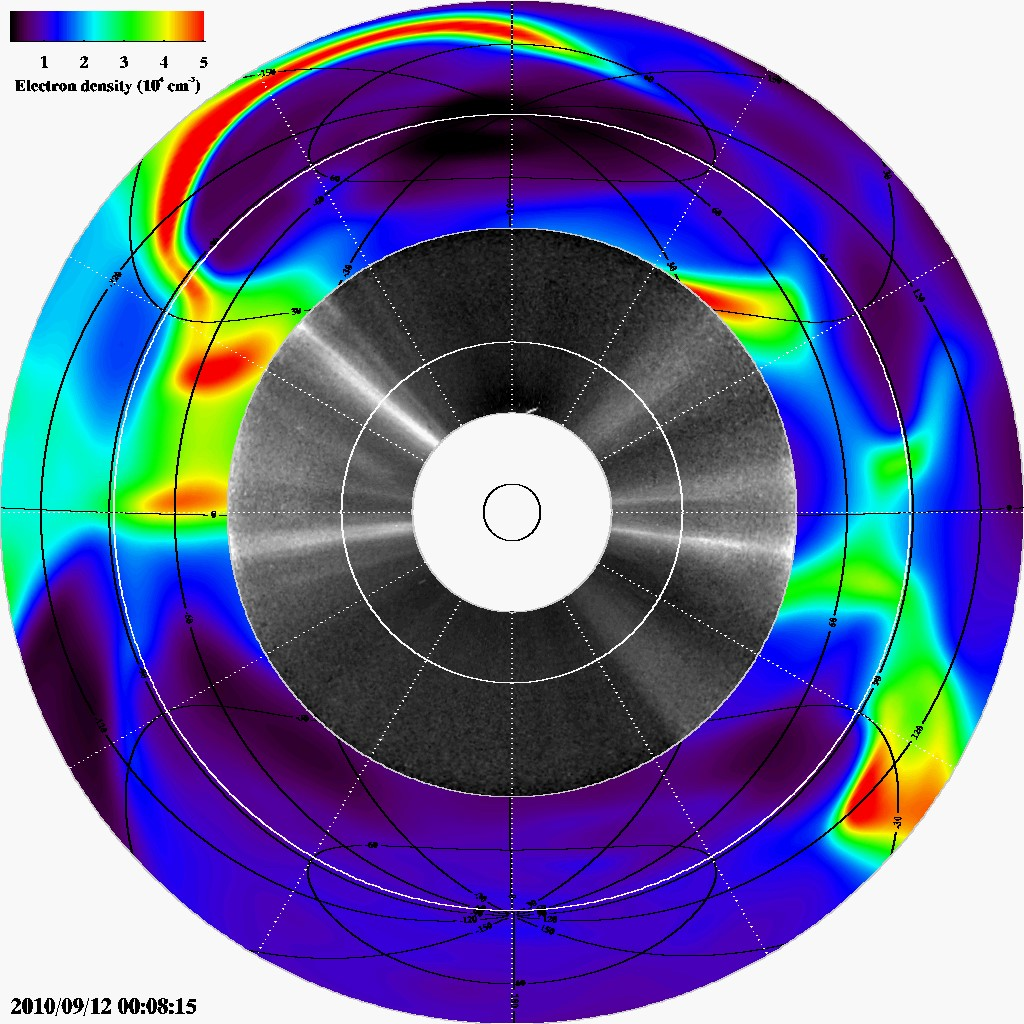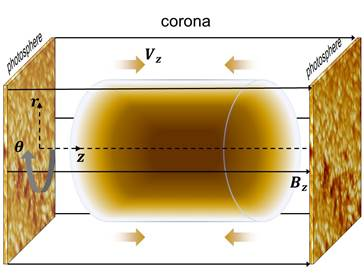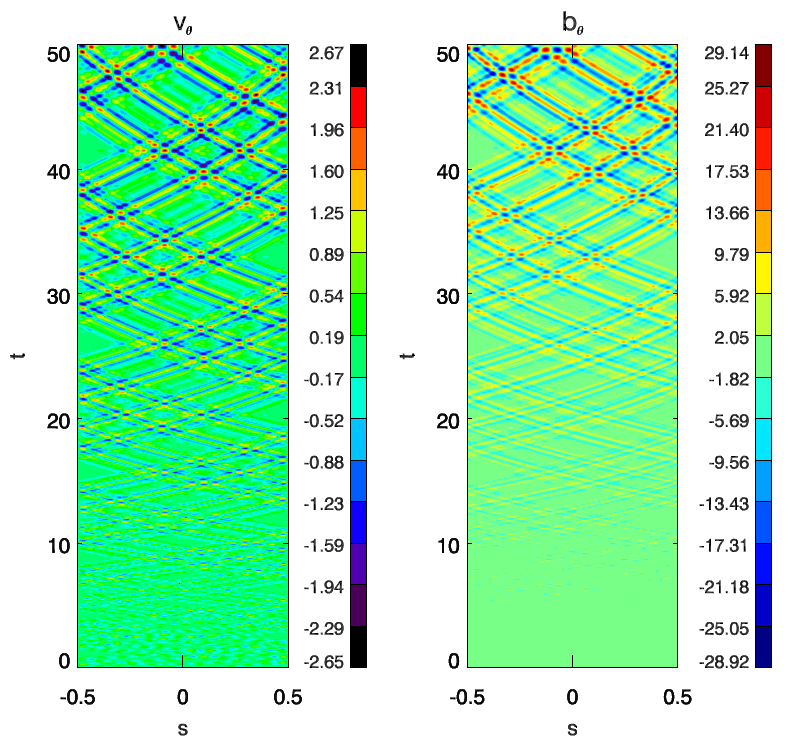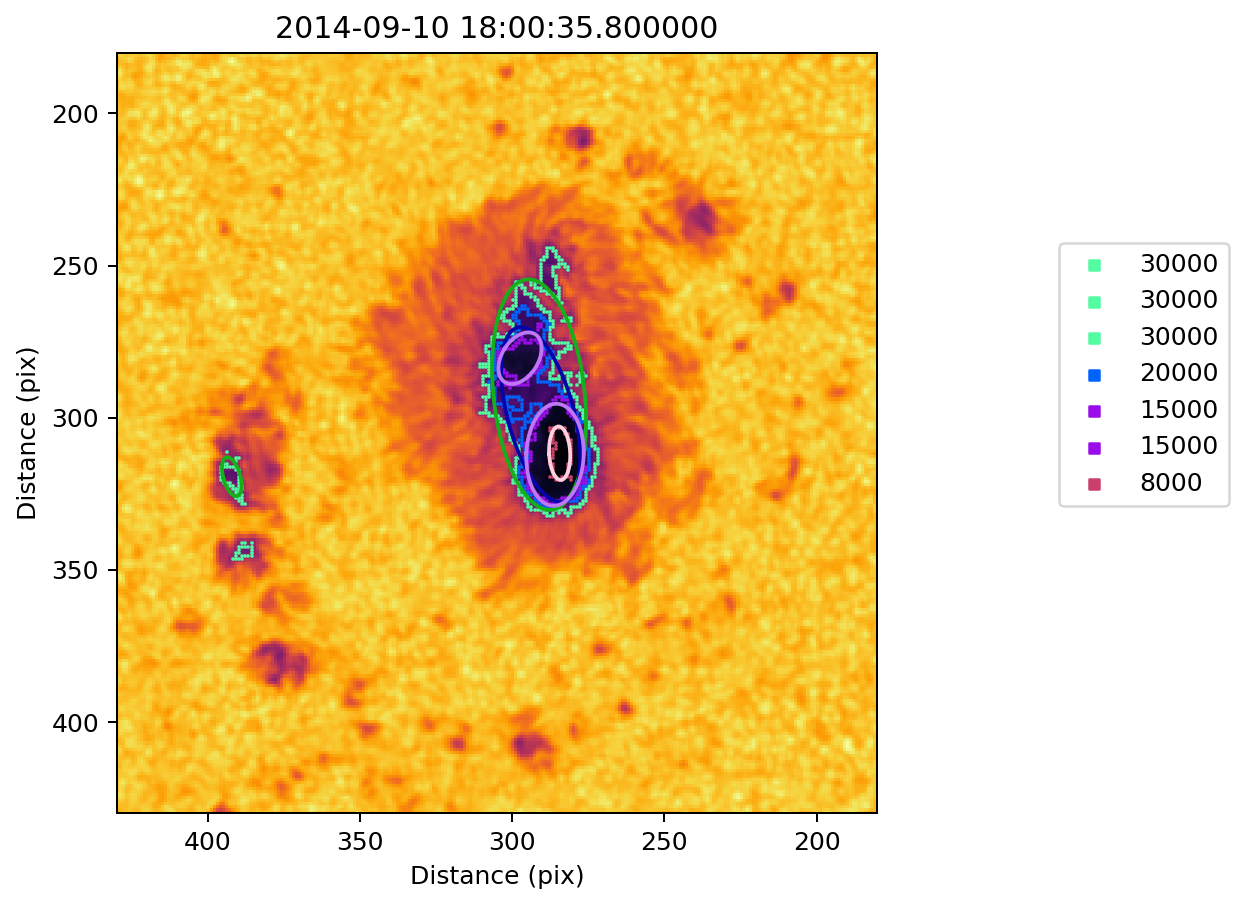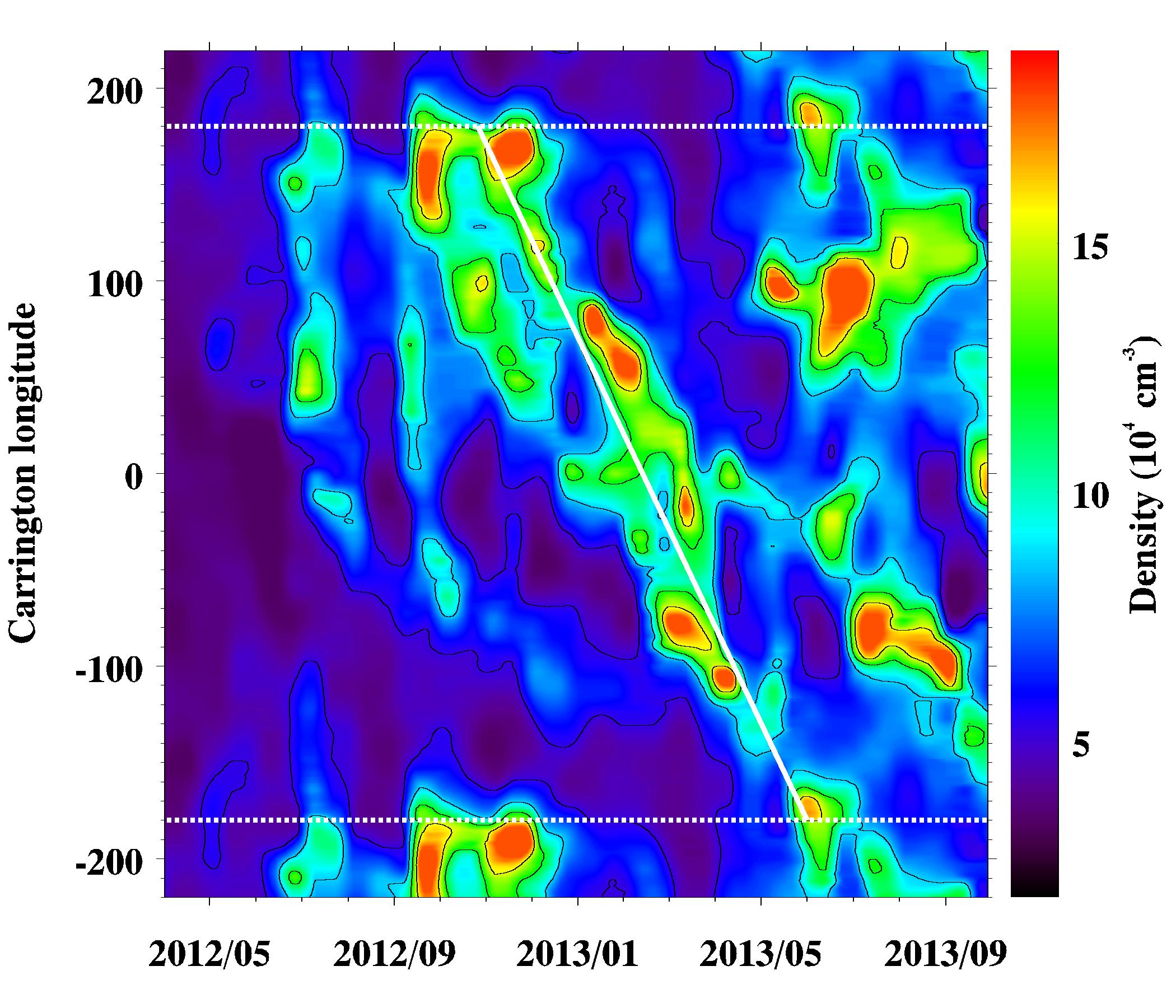Deriving electron densities from linear polarization observations of the white-light corona during the 2020 December 14 total solar eclipse
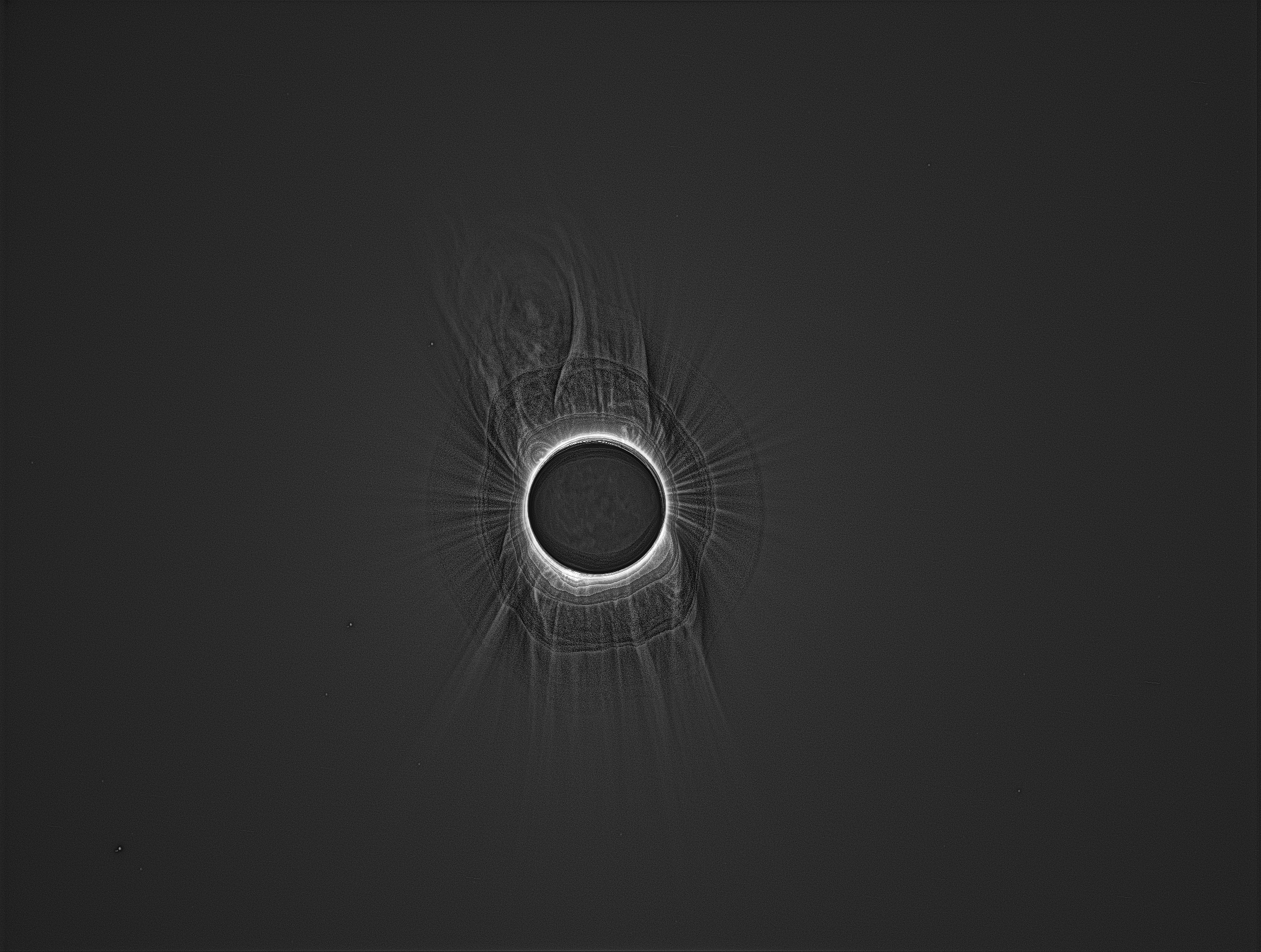 Total solar eclipses provide a unique - albeit temporary - window into the lower corona. Normally, researchers use coronagraphs,
such as the Large Angle Spectrometric Coronagraph (LASCO), to observe the solar corona. A coronagraph is an observing
instrument with an occulting disk which blocks the bright disk of the Sun, allowing the fainter corona to shine out behind it.
However, the issue with coronagraphs lies in the fundamental nature of electromagnetic waves and how they scatter off the limb
of the occulting disk and are therefore detected by the instrument as stray light. Consequently, the very lower part of the corona
is difficult to observe in this way. This is where the perfect cosmic coincidence of a total solar eclipse comes into play.
Since the Moon is 400 times smaller than the Sun, and the Sun happens to be 400 times further away from the Earth than
the Moon, the lunar and solar disks, therefore, appear the same size in the sky to an observer on Earth – a perfect occulting
disk!
Total solar eclipses provide a unique - albeit temporary - window into the lower corona. Normally, researchers use coronagraphs,
such as the Large Angle Spectrometric Coronagraph (LASCO), to observe the solar corona. A coronagraph is an observing
instrument with an occulting disk which blocks the bright disk of the Sun, allowing the fainter corona to shine out behind it.
However, the issue with coronagraphs lies in the fundamental nature of electromagnetic waves and how they scatter off the limb
of the occulting disk and are therefore detected by the instrument as stray light. Consequently, the very lower part of the corona
is difficult to observe in this way. This is where the perfect cosmic coincidence of a total solar eclipse comes into play.
Since the Moon is 400 times smaller than the Sun, and the Sun happens to be 400 times further away from the Earth than
the Moon, the lunar and solar disks, therefore, appear the same size in the sky to an observer on Earth – a perfect occulting
disk!
One of the important physical parameters to determine when studying the solar corona is the electron density. This can be determined by taking white-light polarisation images of the corona during the totality of a total solar eclipse. Various image processing techniques can then be used to bring out as much information in the images as possible, followed by an inversion technique, originally developed in the 1950s, which can be used to determine the electron density from the brightness of these polarised images. I am part of the team which sent an instrument - the Coronal Imaging Polariser (CIP) - to the total solar eclipse which occurred on December 14th, 2020, in South America. The instrument was named CIP since, in Welsh, to take a "cip" at something is to take a quick look - fitting since totality during a total solar eclipse typically only lasts a few minutes!

